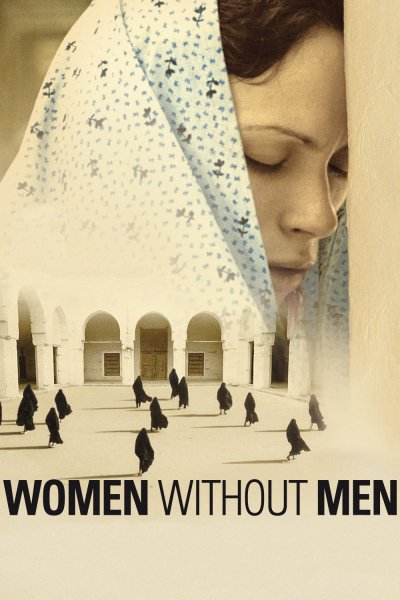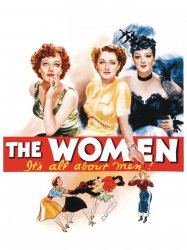Women Without Men is a film of genre Drama directed by Shirin Neshat released in USA on 23 january 2010 with Orsolya Tóth
Women Without Men (2009)

If you like this film, let us know!
- Infos
- Casting
- Technical infos
- Photos
- Videos
- Film quotes
- Characters
- Music
- Awards
Women Without Men is a 2009 film adaptation of a Shahrnush Parsipur novel, directed by Shirin Neshat.
Shirin Neshat is an Iranian-born artist and photographer whose work explores gender issues in the Islamic world. Women without Men is Neshat's first dramatic feature. Neshat, banned from even visiting Iran since 1996, lives and works in New York City. Neshat left Iran in 1979, just before the Islamic Revolution that drove the Shah into exile.
The film profiles the lives of four women living in Tehran in 1953, during the American-backed coup that returned the Shah of Iran to power. The film was called "visually transfixing" by the New York Times reviewer Stephen Holden, who added, "the film surpasses even Michael Haneke’s The White Ribbon in the fierce beauty and precision of its cinematography (by Martin Gschlacht)." Two of the film’s recurrent images are of a long dirt road extending to the horizon on which the characters walk, and a river that suggests, "a deep current of feminine resilience below an impassive exterior.
Synopsis
The film begins with the sound of Adhaan. A woman is standing on the rooftop contemplating jumping. She jumps in slow motion. Flashback. Munes does not want a husband. Her tyrannical brother, Amir Khan, wants Munes to prepare for a visiting suitor and demands that she cook dinner for them. When she scoffs at the idea, he gets angry, and threatens that if she leaves the house he will break her legs.Actors
Comments
Leave comment :
Suggestions of similar film to Women Without Men
There are 11 films with the same actors, 1 films with the same director, 61877 with the same cinematographic genres, 7859 films with the same themes (including 450 films with the same 2 themes than Women Without Men), to have finally 70 suggestions of similar films.If you liked Women Without Men, you will probably like those similar films :

The Green Wave (2012)
, 1h20Directed by Ali Samadi Ahadi
Origin German
Genres Documentary, Historical, Politic, Animation
Themes Politique, Documentary films about historical events, Political films, Documentaire historique sur le printemps arabe
Actors Pegah Ferydoni, Navíd Akhavan
Rating73%





Le film mêle des images documentaires des protestations iraniennes de 2009 et des séquences animées mettant en scène deux étudiants fictifs pendant ces événements réels.

Anatomy of Hell (2004)
, 1h17Directed by Catherine Breillat
Origin France
Genres Drama, Pornographic
Themes Feminist films, Films about sexuality, Erotic films, LGBT-related films, Political films, LGBT-related films, LGBT-related film
Actors Amira Casar, Rocco Siffredi, Catherine Breillat
Rating44%





Teetering on the edge of overwhelming ennui, a lonely and dejected woman pays a gay man to join her for a daring, four-day exploration of sexuality in which both reject all convention and smash all boundaries while locked away from society in an isolated estate. Only when the man and woman confront the most unspeakable aspects of their sexuality will they have a pure understanding of how the sexes view one another.

Spice World (1997)
, 1h33Directed by Bob Spiers
Origin United-kingdom
Genres Drama, Comedy, Fantasy, Adventure, Musical
Themes Films about films, Feminist films, Films about music and musicians, Musical films, Political films, Buddy films
Actors Mel B, Richard E. Grant, Emma Bunton, Claire Rushbrook, Roger Moore, Melanie C
Rating37%





The film begins with the Spice Girls performing "Too Much" on Top of the Pops, but they later become dissatisfied with the burdens of it. Meanwhile, sinister newspaper owner Kevin McMaxford (Barry Humphries) is attempting to ruin the girls' reputation for his newspaper's ratings. McMaxford dispatches photographer Damien (Richard O'Brien) to take pictures and tape recordings of the girls. Less threatening but more annoying is documentarian Piers Cuthbertson-Smyth (Alan Cumming), who stalks the girls along with his camera crew, hoping to use them as subjects for his next project. At the same time, the girls' manager, Clifford (Richard E. Grant), is fending off two over-eager Hollywood writers, named Martin Barnfield and Graydon (George Wendt and Mark McKinney), who relentlessly pitch absurd plot ideas for a feature film for the Spice Girls.

Big Eyes (2014)
, 1h45Directed by Tim Burton, Larry Karaszewski
Origin USA
Genres Drama, Biography, Romance
Themes Feminist films, Peinture, Political films
Actors Ryan Reynolds, Amy Adams, Christoph Waltz, Reese Witherspoon, Krysten Ritter, Danny Huston
Rating69%





In 1958, Margaret leaves her husband and takes her young daughter Jane to North Beach, San Francisco. Supporting her daughter alone, Margaret gets a job painting illustrations at a furniture factory. While creating portraits at an outdoor art show, Margaret meets Walter Keane, who is selling his Parisian street scene paintings. Soon, Walter proposes to her and they marry.
 , 1h36
, 1h36Directed by Mamoru Oshii, Mizuho Nishikubo
Origin Japon
Genres Drama, Science fiction, Animation
Themes Feminist films, Films about computing, Films about religion, Films set in the future, Political films, Films about Jews and Judaism, Cyberpunk films, Dystopian films, Children's films, Golem
Actors Akio Ōtsuka, Yutaka Nakano, Atsuko Tanaka, Kōichi Yamadera, Hiroaki Hirata, Naoto Takenaka
Rating73%





The story is loosely based on Ghost in the Shell manga chapter "Robot Rondo" (with elements of "Phantom Fund"). Opening in 2032, Public Security Section 9 cybernetic operative Batou is teamed with Togusa, an agent with very few cybernetic upgrades, following the events of Ghost in the Shell.

Dirty Diaries (2009)
, 1h45Directed by Mia Engberg
Genres Drama, Erotic, Documentary, Pornographic
Themes Feminist films, Politique, Films about sexuality, LGBT-related films, Political films, LGBT-related films, LGBT-related film
Actors Mia Engberg
Rating47%





The thirteen short films that make up the entire collection vary considerably in length and style.

She Must Be Seeing Things (1987)
, 1h35Origin USA
Genres Drama
Themes Feminist films, Films about sexuality, LGBT-related films, Political films, LGBT-related films, LGBT-related film, Lesbian-related films
Actors Peggy Shaw
Rating58%





The film focuses on the relationship between filmmaker Jo (Lois Weaver) and her girlfriend, lawyer Agatha (Sheila Dabney). While tidying the books and papers in Jo's flat, Agatha finds suggestive photos of Jo and her former (male) lovers. She also finds a diary, with more photos and pages about men that Jo has known in the past. Agatha becomes suspicious that Jo is seeing a man as well as her, and even appears to follow her.

Chantilly Lace (1993)
, 1h41Directed by Linda Yellen
Origin USA
Genres Drama
Themes Feminist films, Political films, Buddy films
Actors JoBeth Williams, Helen Slater, Martha Plimpton, Ally Sheedy, Jill Eikenberry, Talia Shire
Rating60%






Girlhood (2014)
, 1h52Directed by Céline Sciamma
Origin France
Genres Drama
Themes L'adolescence, La banlieue française, Films about children, Feminist films, Politique, Political films, Buddy films
Actors Tatiana Rojo, Cyril Mendy, Karidja Touré, Assa Sylla, Lindsay Karamoh, Idrissa Diabaté
Rating68%





Marieme (Karidja Touré) is a 16-year-old African-French teenager living in a poor Paris suburb. Academically Marieme struggles, which forces her into a vocational track where she will learn a certain trade. Due to her mother's demanding work schedule, Marieme's abusive brother is in charge. On her way out of school, the day she found out about vocational school, she is approached by a gang of girls, Lady (Assa Sylla) who is the leader of the group, and her followers, Fily (Marietou Tore), and Adiatou (Lindsay Karamoh), who ask Marieme if she wants to join them for a day trip to the city centre. They wear leather jackets, gold jewelry, and have pin straight hair. Marieme initially declines but after seeing the girls approached by a group of boys, including her brother's friend, Ismael (Idrissa Diabate) whom she has a crush on, Marieme joins them.

The Women (1939)
, 2h14Directed by George Cukor
Origin USA
Genres Drama, Comedy, Comedy-drama, Romantic comedy
Themes Feminist films, Films about sexuality, Théâtre, LGBT-related films, Political films, Films based on plays, Buddy films, LGBT-related films, LGBT-related film
Actors Norma Shearer, Joan Crawford, Rosalind Russell, Paulette Goddard, Mary Boland, Joan Fontaine
Rating76%





The Women follows the lives of Manhattan women, focusing in particular on Mary Haines (Norma Shearer), the cheerful, contented wife of Stephen and mother of Little Mary (Virginia Weidler). After a bit of gossip flies around the salon these wealthy women visit, Mary's cousin Sylvia Fowler (Rosalind Russell) goes to a Salon to get the newest, exclusive nail color: Jungle Red. She learns from a manicurist that Mary's husband has been having an affair with a predatory perfume counter girl named Crystal Allen (Joan Crawford). A notorious gossip, Sylvia delights in sharing the news with Mary's friends; she sets up Mary with an appointment with the same manicurist so that she hears the rumor about Stephen's infidelity.
 Connection
Connection



